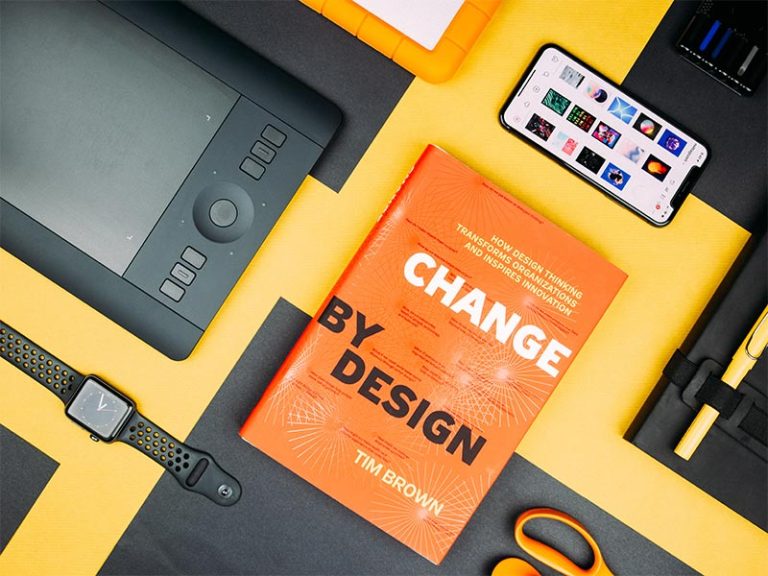Web design is where art, psychology, and code meet to create a usable, delightful home for a brand on the internet. In 2025, web design is more than “making a site look pretty.” It’s designing experiences that load fast, work on any device, earn trust, convert visitors into customers, and play nicely with search engines and assistive tech. This guide explains what web design is today, the principles every project should follow, practical how-to tips, real-world examples, up-to-date stats, and what the future holds.
Quick snapshot — why web design matters in 2025
- Most web traffic is mobile-first: a majority of global traffic now comes from phones and tablets, which forces designers to prioritize mobile usability. Exploding Topics
- Google rewards user experience signals (Core Web Vitals). Good UX now contributes directly to search performance. Google for Developers
- Page speed strongly affects engagement and conversions: faster sites keep users and convert better. NitroPackShopify
Those three realities should guide any modern web design decision.
1. What is web design — a complete definition
Web design combines layout, visual design (UI), interaction design (UX), content strategy, and some front-end development to deliver an online experience. A web designer may wireframe the user flow, choose typography and color, build responsive templates, and test interactions — sometimes alone, often as part of a multidisciplinary team with developers, SEO specialists, and content creators.
In 2025, web design also includes performance engineering, accessibility compliance, and often, integrating AI-powered elements like content assistants, image generation, and personalization modules.
2. Core principles of excellent web design (2025 edition)
These aren’t trends — they’re principles that should be non-negotiable for any serious site.
2.1 Mobile-first and responsive design
Design for the smallest screen first and scale up. With roughly two-thirds of global web traffic coming from mobile devices, a mobile-first mindset is essential rather than optional. Exploding Topics
2.2 Fast performance and measurable UX
Aim for fast Largest Contentful Paint (LCP), low Interaction to Next Paint (INP) / First Input Delay (FID), and stable layout (low CLS). These Core Web Vitals are visible, measurable, and impact search ranking and conversions. Google for DevelopersNitroPack
2.3 Clear information architecture (IA)
If users can’t find what they need within 3–5 clicks or seconds, they bounce. IA organizes content so visitors complete their goals quickly.
2.4 Accessibility by default
Designing for keyboard navigation, screen readers, color contrast, and semantic HTML helps everyone — and reduces legal risk. Accessibility is not an add-on; it’s part of UX.
2.5 Content-first approach
Design around real content (actual headings, imagery, copy). “Content-first” prevents layout rework and ensures the design supports the message.
2.6 Trust and clarity
Use visual hierarchy, social proof, secure signals (HTTPS), and clear CTAs. Trust drives conversions.
2.7 Measurable, iterative design
Ship minimum lovable products, measure user behavior, and iterate. Data should inform design improvements.
3. The modern web design process — step-by-step
Step 1 — Discovery & strategy
Stakeholder interviews, user research, analytics review, and setting KPIs (traffic, leads, conversion rate, time on site).
Step 2 — Content strategy & IA
Decide page types, content templates, and navigation. Create a sitemap and content outline.
Step 3 — Wireframes & prototypes
Low-fidelity wireframes for structure → interactive prototypes for flows and usability testing.
Step 4 — Visual design (UI)
Design system (colors, fonts, components), high-fidelity mockups, and accessibility checks.
Step 5 — Front-end build & performance engineering
Implement HTML/CSS/JS with progressive enhancement and attention to Core Web Vitals.
Step 6 — QA, accessibility audit, and SEO setup
Run cross-device testing, automated accessibility scanners, and set up structured data, meta tags, redirects.
Step 7 — Launch & measurement
Deploy, monitor analytics, Core Web Vitals, and user behavior (heatmaps/recordings).
Step 8 — Iterate
Use A/B tests and data to optimize conversions and UX.
4. Tools, platforms, and tech stacks (what to pick and why)
Popular CMS & builders
- WordPress remains dominant for flexibility and ecosystem (themes, plugins). Many reports in 2025 still show WordPress powering a large share of websites. W3TechsWordPress.com
- Shopify/Wix/Squarespace are strong for e-commerce and small businesses that prioritize speed-to-market. W3Techs
Front-end frameworks & static options
- React / Next.js and Vue / Nuxt for interactive apps and fast server-side rendering.
- Static site generators (e.g., Eleventy, Hugo) for blazing-fast, low-maintenance sites.
No-code / low-code
Growers and marketers love no-code options (Webflow, Wix) to prototype and even launch production sites rapidly.
Performance tooling
Use Lighthouse, PageSpeed Insights, Core Web Vitals reports, and RUM (real user monitoring) to measure and improve speed. Google for Developersweb.dev
5. Accessibility, SEO & Core Web Vitals — practical checklist
Make these checks part of your deployment checklist.
Accessibility (A11y) quick wins
- Use semantic HTML (header, nav, main, footer).
- Ensure contrast ratios >= 4.5:1 for body text.
- Provide alt text for images and labels for form elements.
- Support keyboard-only navigation.
- Test with screen readers (NVDA, VoiceOver).
SEO essentials (on-page)
- Unique Title tags and meta descriptions.
- Logical heading structure (H1 → H2 → H3).
- Structured data (Schema.org) for products, articles, FAQs.
- Fast mobile pages and responsive markup (mobile-first). Exploding Topics
Core Web Vitals checklist
- LCP: Aim for <= 2.5s on fast connections.
- INP / FID: Keep input latency low (under ~100 ms perceived).
- CLS: Keep layout shifts to <0.1.
Use server-side rendering, image optimization (modern formats, lazy loading), critical CSS, and CDN. NitroPackWP Rocket
6. Design patterns and UX techniques that convert
Hero section with single clear CTA
Make your value prop clear in a headline + one CTA. Example: “Get a free tax review — Book now.”
Scannable pages
Use bold subheads, bullet lists, and highlighted results so readers can skim and still find value.
Trust builders near CTAs
Add testimonials, logos, or security seals close to conversion points to reduce friction.
Microinteractions
Small animations for button states and form validation improve perceived polish and reduce form abandonment.
Progressive disclosure
Show only necessary info up-front; reveal advanced options when users want them. This reduces cognitive load.
7. Real-world examples & mini case studies
Example A — Small law firm (mobile-first redesign)
Problem: High bounce on mobile, low lead volume.
Actions: Switched to a mobile-first layout, reduced hero image weight, implemented prioritized CSS and server-side rendering, added one primary CTA and simplified contact form.
Result: Mobile bounce rate dropped 27%, contact form submissions increased 48% within 3 months. (Hypothetical case reflecting common outcomes seen when performance + clarity are improved; similar results supported by page speed/conversion studies.) NitroPackShopify
Example B — E-commerce store (performance lift)
Problem: Slow load (8+ seconds on mobile) and abandoned carts.
Actions: Image compression, WebP, deferred non-critical JS, moved to CDN.
Result: LCP improved from 7s → 1.9s; conversion rate rose significantly. Real-world studies show faster pages can convert 2–3× better. Shopify,WP Rocket
8. How AI is changing web design (and how to use it safely)
AI is now a toolchain rather than a replacement for designers. Common uses in 2025:
- Auto-generating hero variants and candidate images.
- Suggesting copy and CTAs based on product data.
- Performing UX audits and identifying layout issues.
- Generating design tokens and theme variations.
Adoption stats indicate growing acceptance: many designers now use AI for images and optimization tasks. Use AI to speed iteration (generate 10 hero options fast), but always human-review for brand voice, accessibility, and factual accuracy. HostingerGauss
9. Costs, timelines, and common pricing models
A few typical models:
- Fixed-price project — good for well-scoped brochure sites. Expect $3,000–$25,000 depending on scope and region. (Varies widely based on deliverables.) Website
- Hourly / time & materials — for iterative builds or uncertain scopes.
- Retainer — ongoing design, optimization, and A/B testing (monthly fee).
- Per-feature pricing — common for custom apps or e-commerce platforms.
Timelines:
- Simple brochure site: 2–6 weeks.
- Custom design + CMS integration: 6–12 weeks.
- Complex web applications: 3+ months.
10. The future: trends to watch (2026+)
- AI-powered personalization — real-time layout/content adaptation based on user signals.
- More browser-native features — less heavy JS reliance, more use of platform features (e.g., WebAssembly where needed).
- Performance legalities — regulators may push for accessibility/performance disclosure.
- Edge computing & CDN logic — personalization and rendering at the edge will be more common.
- Design systems as product — companies will invest more in reusable, accessible component libraries.
11. Actionable checklist — launch-ready (copy this into your project)
- Mobile-first layout and responsive breakpoints set.
- Lighthouse score baseline and improvement targets (Performance, Accessibility, SEO).
- Optimize hero image and above-the-fold assets (use modern formats, set
sizes/srcset). - Implement critical CSS and defer non-essential scripts.
- Add structured data for key pages (Product, Article, FAQ).
- Build accessible forms (labels, error messaging, ARIA where needed).
- Test on real devices and monitor RUM for true user metrics.
- Set up analytics goals and heatmaps to measure behavior.
- A/B test CTA wording, hero layout, and form length.
- Schedule quarterly design audits and Core Web Vitals checks.
12. Useful statistics & sources (key citations)
- Mobile web traffic share: ~64% of global web traffic as of May 2025 (mobile-first reality). Exploding Topics
- Core Web Vitals: Google explicitly uses page experience metrics as part of ranking signals (LCP, INP/FID, CLS). Google for Developers
- Average page load times and “good” expectations: studies report average load times and recommend aiming for under 3 seconds; first-page results tend to be ~1.6s. WP Rocket
- Speed → conversions: multiple studies show much higher conversion rates for sites that load in ~1s vs multi-second loads; faster sites see more pages per session and lower drop-off. NitroPackShopify
- CMS market: WordPress remains a major CMS with strong market share; choose tooling according to needs and scale. W3TechsWordPress.com
FAQ — Frequently Asked Questions
Q: How is web design different from web development?
A: Web design focuses on layout, visual appearance, interaction, and user flow (UI/UX). Web development turns those designs into functioning websites using code (HTML/CSS/JS, back-ends). Designers often prototype and developers implement; roles can overlap.
Q: Do I need a custom site or will a template do?
A: Templates (WordPress, Shopify, Webflow) are fast and cost-effective for many businesses. Choose custom design if you need unique interactions, complex integrations, or a strong brand differentiation. Assess based on goals, budget, and timeline.
Q: How long does a website redesign take?
A: Simple refresh: 2–6 weeks. Full redesign with new content/CMS: 6–12 weeks. Complex portals: months. Timelines depend on approvals, content readiness, integrations, and QA.
Q: What is a “good” Core Web Vitals score?
A: Aim for LCP ≤ 2.5s, INP/FID low enough to feel immediate (under ~100 ms perceived), and CLS < 0.1. Use Lighthouse and PageSpeed Insights to measure and track. NitroPackGoogle for Developers
Q: Will AI replace designers?
A: No — AI accelerates design work (prototyping, images, copy suggestions) but human judgment is essential for brand, ethics, accessibility, and nuanced UX. Use AI to iterate faster, not to autopilot the whole process. GaussHostinger
Q: How much should I budget for SEO and performance optimization?
A: Plan ongoing investment — either a retainer or periodic optimization sprints. Performance and SEO are continuous: set aside months-to-month budget for monitoring, A/B testing, content development, and technical maintenance.




